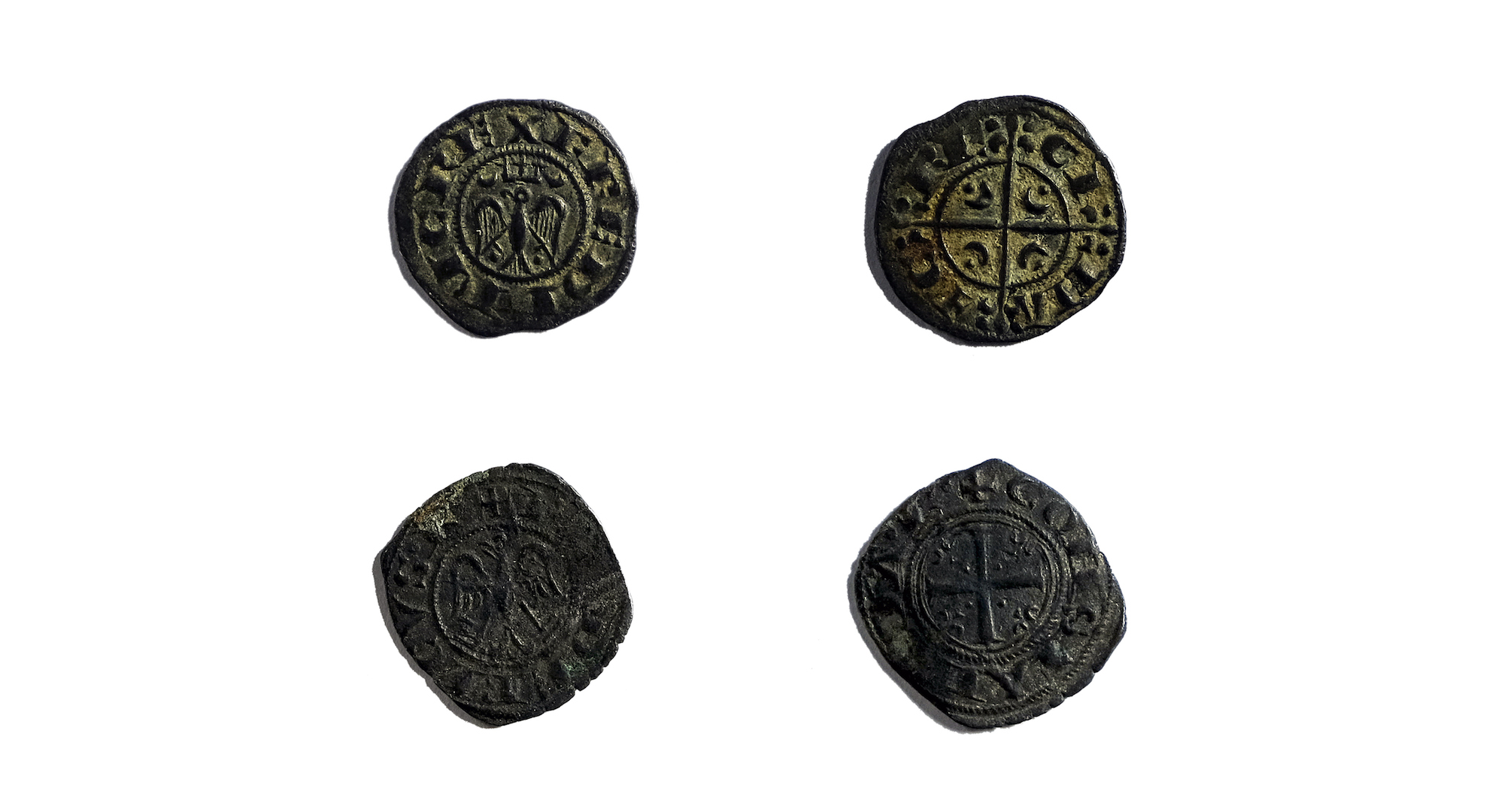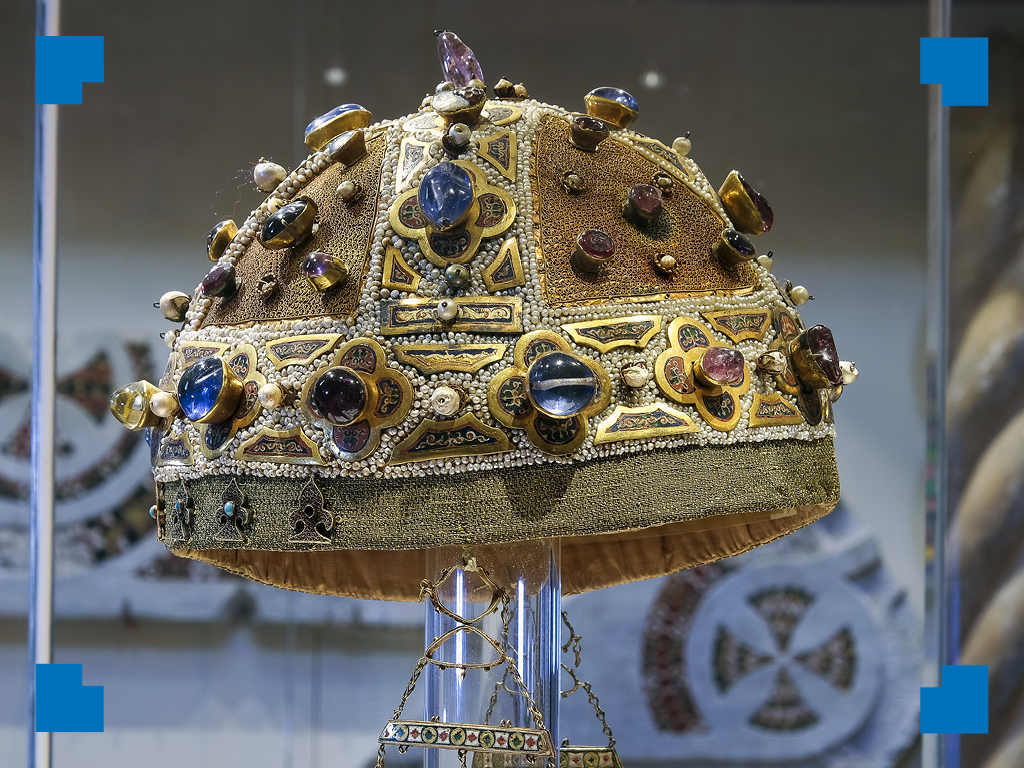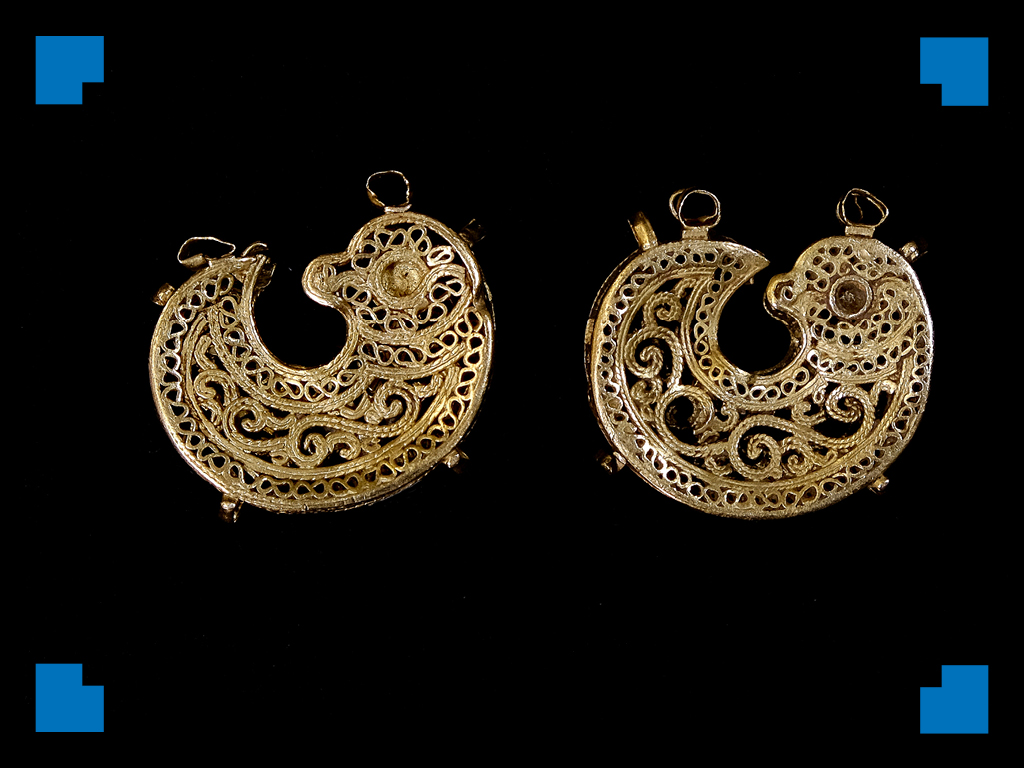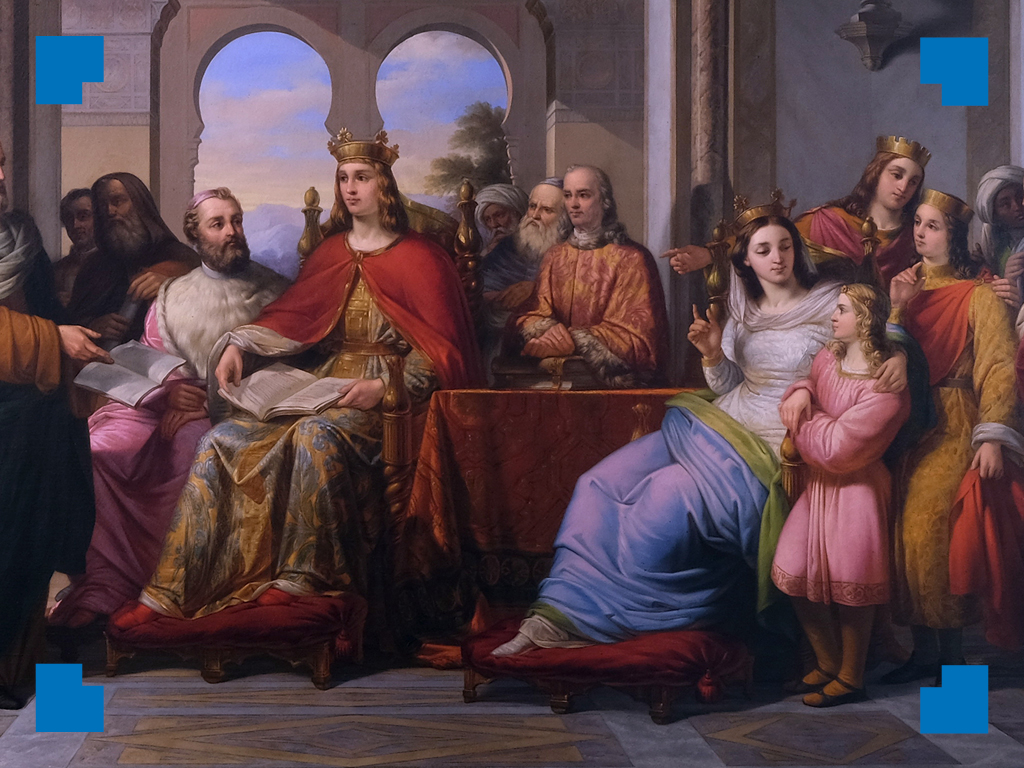
14. Denari ‘of the wedding’
Mint of Messina or Palermo, 1209-1212
Denari ‘of the wedding’
KING FREDERICK / QUEEN CONSTANCE
Billon (low silver alloy)
(a. 1,5-1,6×1,6-1,8 cm)
Palermo, Regional Archaeological Museum “A. Salinas”,
cat. n. 34128, 34029
The two specimens of money here exhibited belong to the coinage called “of the wedding” (1209-1212), because of the explicit reference to both Frederick II and his wife Constance of Aragon, the King and Queen of Sicily.
Both coins display the Swabian crowned eagle on the obverse and the cross on the reverse.
Focus
The coinage of the Kingdom of Sicily at the time of Frederick II, continuing the Norman tradition, which was in turn based on the Islamic and Byzantine “Mediterranean” system (unlike northern Italy and north-western Europe where the economy was based on silver), included gold coins (the tarì, that is, “freshly [minted]”), but also silver alloy billon coins (the dinar, or denaro, “containing ten”).
Only after the imperial coronation by the Pope (1220) and the Constitutions of Melfi (1231), the system was reorganized, with the introduction of a new gold coin, the augustale, which was worth 5 tarì.
The main mints were Messina for Sicily and Brindisi for southern Italy, but also Palermo and Amalfi issued currency.


